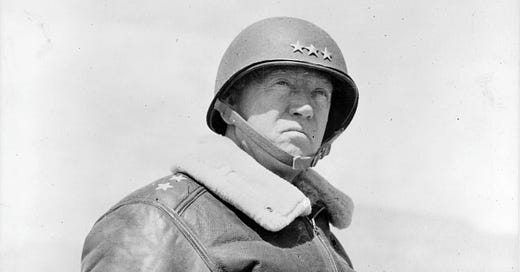Never tell people how to do things. Tell them what to do and they will surprise you with their ingenuity. - General George S. Patton
Leaders have many roles: set the example, coach, mentor, inspire, set goals and standards, manage resources, reward and discipline team members, seek input, develop, think, execute, inspire hope, and on and on. The list can (and does) seem endless. Nestled amid all these demands is one that can be often overlooked: Leaders must know when to get out of the way of their teams. That sounds like the opposite of what leaders do but getting out of the way and letting their people take over will often lead to not just success but exceeding expectations.
Leadership, the process of influencing behavior to achieve some desired end, is a function of the trust and credibility between the team and the leader (and their leaders). The trust and credibility of, and in, the leader is developed over time by the leader’s words, practices, and living example of the leader’s own values and virtues. The leader’s example is what the team will follow, good bad, or indifferent. What the leader does and is seen to do is far more powerful than what they write on the company website, send out in emails or say in meetings or speeches. The leader’s strongest communication is what they do not what they say they do. The stronger the communication between the leader and the team, the stronger the trust and credibility is between them as well.
When we establish that base of trust and credibility between ourselves and our teams, we must take the leap of faith and get out of the way. Much like teaching a kid to ride a bike. You apply some safety parameters (helmet, elbow/knee pads, and training wheels), teach the basics (pedal forward, how to use the coaster brake), demonstrate, and supervise execution exhibiting less and less control until you’ve taken off the wheels. Then it is time for solo rides. At first you maintain a grasp of the seat, then ease up until they are pedaling on their own as you trot along side for a bit. Then they’re off. There will be spills, bumps, bruises and a couple of crashes. There will be growing pains and anxiety on both sides; the same is true in leadership. As leaders, we establish, and maintain, the trust and credibility in and of our teams that allow us to establish end state goals (the what and why we are looking for), give them the resources and authority to execute, and leave the how to them. This doesn’t mean we remove ourselves entirely from the equation; the leader always makes themselves available to receive updates or provide additional guidance, assistance, additional resources if needed, and keep aware possible pitfalls. It is a balancing act. We must let the team workout and solve issues and challenges on their own but be available to step in as required.
When we empower our teams there can be two nagging thoughts that keep us from truly letting go. The first is, “If they fail, I as the leader am still ultimately responsible.” Yep. You sure are. Welcome to Leadership 101: it’s yours you own it. All of it. Sometimes despite all the best intentions, preparations, and against the odds, it won’t go your way. In the military and law enforcement, it’s summed up as, “The bad guy always gets a vote.” It’s the way life goes. There is no reward without risk. In my experience, if you have built up the trust and credibility bank with those above and below you in the chain of command, failures are learned from and dealt with. In many instances, if you’ve done it right, your folks won’t let you fail.
The second nagging thought is “if they succeed without me, I might not be needed.” Bingo. As a leader one of your main jobs is to make you irrelevant. The true indication of your leadership success is not what folks do when you’re around, but how well they perform when you’re not. If you’ve built a solid, competent, and dedicated team, they know what to do, they know what “right” looks like, why they do it and how to get it done without you. Again, that sounds counterintuitive but it’s completely true. It also requires, trust and humility on your part as the leader. When you realize you are there, it’s like a proud parent moment.
As General Patton said, tell them what you want done, then get out of the way and be amazed.






Nice piece George!